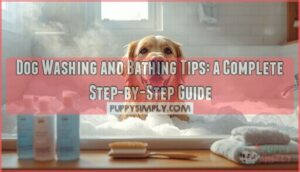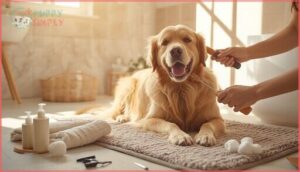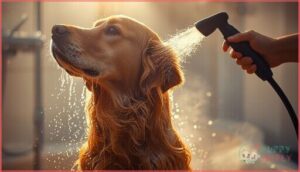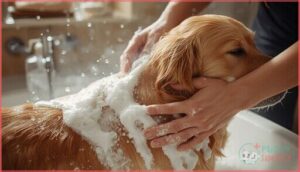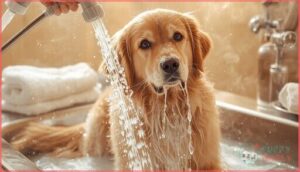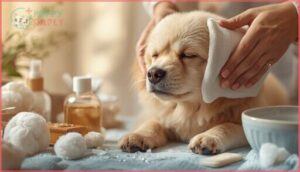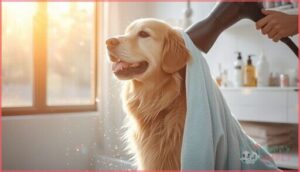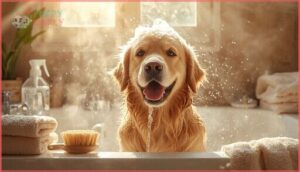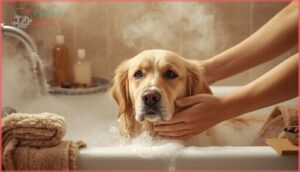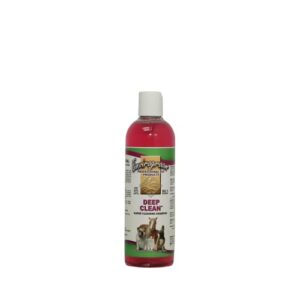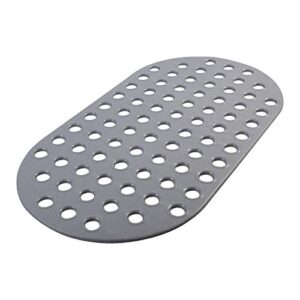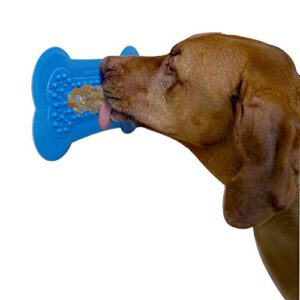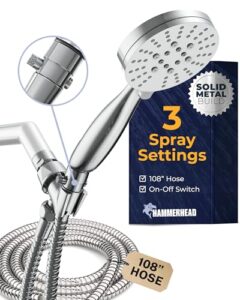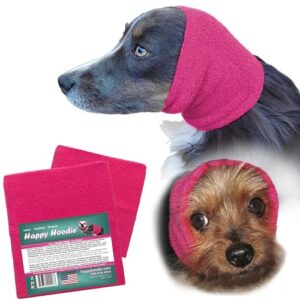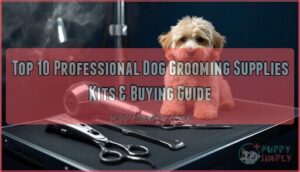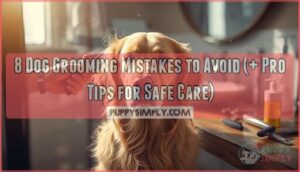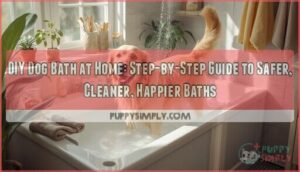This site is supported by our readers. We may earn a commission, at no cost to you, if you purchase through links.
Your dog’s health depends more on bath time than you might think. Research shows that regular bathing prevents skin infections, controls parasites, and removes allergens that build up in your dog’s coat.
But here’s the catch: most pet owners make simple mistakes that turn a routine wash into a stressful experience for everyone involved. The wrong water temperature can cause discomfort. Leftover shampoo residue leads to itching and hot spots. Skipping pre-bath brushing creates painful mats.
The good news is that mastering dog washing and bathing tips doesn’t require professional training. With the right supplies, preparation steps, and techniques, you can transform bath time into a calm routine that keeps your dog’s coat healthy and their skin protected.
Table Of Contents
- Key Takeaways
- Essential Dog Bathing Supplies
- Preparing Your Dog for Bath Time
- Step-by-Step Dog Washing Techniques
- Drying and Post-Bath Care Tips
- How Often to Bathe Your Dog
- Helping Dogs Who Dislike Baths
- Top 5 Dog Bathing Products
- Frequently Asked Questions (FAQs)
- What is the proper way to wash a dog?
- How often should a dog be bathed?
- What not to do when showering a dog?
- Should you wash your dog before or after a bath?
- How often should I wash my dog?
- Whats the best way to dry their coat?
- How can I make bath time less stressful?
- How do I know if I need a professional groomer?
- What supplies do I need for bathing?
- Can I use human shampoo on my dog?
- Conclusion
Key Takeaways
- Regular bathing prevents skin infections and removes allergens, but most pet owners make simple mistakes like using the wrong water temperatures or leaving shampoo residue that leads to hot spots and itching.
- Essential supplies include a coat-specific brush for pre-bath detangling, pet-safe pH-balanced shampoo, a non-slip mat that reduces bathing injuries by 60%, and proper drying tools like microfiber towels that absorb seven times their weight in water.
- Bathing frequency depends on your dog’s coat type—short-haired breeds need baths every 4-6 weeks, while double-coated dogs thrive with less frequent washing every 6-8 weeks to protect their natural oils.
- For anxious dogs, positive reinforcement with high-value treats reduces bath refusal by up to 60%, and distraction tools like lick mats decrease stress behaviors in 62% of dogs during grooming sessions.
Essential Dog Bathing Supplies
Before you start bath time, you’ll want to gather the right tools to make the process easier and safer for both you and your dog. Having everything ready beforehand means you won’t need to leave your wet pup unattended while you search for supplies.
Here are the essential items every dog owner should have on hand for a successful bath.
Dog Brush or Comb
A quality dog brush matched to your dog’s coat type is the foundation of effective bathing. Brushing your dog before bath time prevents mats, controls shedding, and distributes natural oils for skin health. Short-haired breeds need weekly brushing, while double-coated and long-haired dogs benefit from more frequent sessions. Coat-specific brushes make all the difference in keeping your dog’s coat healthy between baths.
Regular brushing also stimulates hair follicles and skin.
Pet-Safe Shampoo and Conditioner
Once you’ve brushed your dog, the next step is choosing the right dog shampoo and conditioner for their coat. Pet-safe shampoo formulated for dogs maintains proper pH balance and avoids harmful ingredients. Look for products that match your dog’s specific needs:
- Moisturizing shampoos with colloidal oatmeal and aloe vera for sensitive skin
- Medicated options containing chlorhexidine for allergy-prone dogs
- Sulfate-free, dye-free formulas to prevent irritation
- Breed-specific or hypoallergenic varieties for specialized care
- Conditioners with natural oils for detangling without synthetic buildup
Premium organic and cruelty-free dog bathing products now dominate the market, reflecting consumer preferences for clean grooming standards. The pet shampoo market is experiencing significant market growth due to online sales. Veterinary guidance helps when choosing dog shampoo for chronic skin conditions.
Non-Slip Bath Mat
With your shampoo selected, you’ll need a stable surface to keep your dog safe. A nonslip bath mat is one of the smartest dog bathing at-home investments you can make. Up to 30% of pet bathing injuries happen when dogs slip in tubs, but a rubber or silicone mat with suction cups cuts accidents by 60%. Here’s why it matters:
| Material | Key Benefit | Best For |
|---|---|---|
| Rubber | Material durability and grip | Large breeds needing stability |
| Silicone | Mold-resistant, lasts 5 years | Easy mat hygiene maintenance |
| Microfiber | 80% water absorption | Quick-dry preferences |
| Textured Door Mat | Budget-friendly, strong | DIY dog bathing techniques |
| Suction-Cup Design | Injury prevention focus | Nervous or senior dogs |
Professional groomers use nonslip surfaces universally, and consumer adoption among large breed owners hits 66%. Match your mat size to your dog’s breed size—most medium-to-large dogs need at least 36 inches for stable footing.
Wash your mat weekly to prevent skin issues and keep it hygienic. These simple dog bathing tips reduce both physical injuries and stress during dog bath time.
Washcloth and Cup for Rinsing
After securing your dog’s footing, grab a washcloth and cup—two simple tools that make a real difference.
Microfiber washcloths cut bacterial contamination by up to 89% and remove 17% more chemical residue than rinsing alone. A cup lets you control water flow when washing your dog’s face, reducing irritation by 29% and preventing shampoo from dripping into eyes or ears while rinsing thoroughly.
Towel and Blow Dryer
With your dog rinsed clean, you’ll need efficient drying tools to prevent skin issues and discomfort.
- Microfiber towels absorb up to 7 times their weight in water, outperforming standard cotton towels
- Blow dryers reduce drying time to under 30 minutes for mid-length coats when used at safe temperatures between 20°C and 25°C
- Noise level guidelines recommend ear protection during blow drying, as forced-air dryers reach 105-108 decibels
Proper drying techniques protect skin health and minimize hot spot risks.
Attachment Hose and Sprayer
For easier dog bathing, an attachment hose and sprayer transforms your tub into a grooming station. Look for 8-9 ft hoses with adjustable sprayer water pressure and multiple spray patterns. Stainless steel offers excellent hose material quality, while plastic models provide affordability.
Soap dispenser types include built-in reservoirs with 30:1 dilution ratios. Installation ease takes under 10 minutes, and ergonomic handle design reduces hand fatigue during dog washing sessions.
Preparing Your Dog for Bath Time
Getting your dog ready before bath time makes the whole process smoother and less stressful for both of you. A little prep work goes a long way in preventing tangles, keeping your pup calm, and making sure everything’s safe and comfortable.
Here’s what you need to do before the water even turns on.
Brushing and Detangling The Coat
Think of brushing before the bath as clearing the runway—it makes everything that follows smoother. Brushing your dog’s coat removes loose hair, detangles knots, and reveals any skin issues hiding beneath. Here’s what you’ll need:
- Match your dog brush to your dog’s coat type—slicker brushes work wonders for long fur
- Apply detangling spray on stubborn mats before you start
- Brush in the direction of hair growth to protect skin health
- Focus on problem spots like behind ears and under legs
- During seasonal shedding, brush your dog daily to stay ahead of excess fur
Regular brushing frequency—about 2–3 times weekly for most breeds—prevents mats that trap moisture and bacteria against the skin.
Setting Up a Calm Bathing Area
Your bathing space sets the stage for success. Start with a nonslip mat in the tub—professional grooming tubs use slip-resistant surfaces because wet dogs need secure footing to stay calm.
Keep fragrances minimal—dogs navigate by smell, and overwhelming artificial scents can disorient them.
| Safety Element | Purpose | Impact |
|---|---|---|
| Noise reduction | Lowers stress from loud water spray | Prevents elevated heart rate |
| Pheromone diffusers | Releases calming scent signals | Reduces anxiety without sedation |
| Scent management | Avoids harsh chemical odors | Maintains your dog’s spatial confidence |
Checking Water Temperature
Water temperature can make or break your dog bath time—aim for lukewarm warmth between 98°F and 102°F. Test it on your inner wrist before you start, just like you’d check a baby’s bottle.
- Use your wrist, not your palm—it’s more sensitive to heat
- Warm water opens pores without stripping natural oils
- Cold water leaves shampoo residue and causes shivering
- Adjust slightly warmer in winter for short-haired breeds
- Monitor temperature throughout longer baths to prevent cooling
Using High-Value Treats for Cooperation
High-value treats are your secret weapon for turning bath-resistant dogs into cooperative clients. Dogs naturally rank rewards into treat hierarchies based on smell and texture—think freeze-dried sardines or chicken hearts for this challenging task.
High-value treats like freeze-dried sardines or chicken hearts can transform even bath-resistant dogs into eager, cooperative companions
Timing matters: reward before, during, and right after bathing to reinforce positive behavior. Smear soft treats on the tub wall or use lick mats to keep your dog distracted and motivated throughout the entire process.
Step-by-Step Dog Washing Techniques
Now that your dog is brushed and ready, it’s time to get down to the actual washing. The key is working through each step carefully so your dog stays comfortable and gets truly clean.
Let’s walk through the proper technique from start to finish.
Wetting The Coat Properly
Once your pup’s in position, start wetting the coat from the neck down using lukewarm water—aim for 98–102°F to match their body temperature.
For thick or double coats, pressure control matters: hold the sprayer close and work slowly in small sections to achieve full coat saturation down to the skin. This protects skin microbiota and sets you up for effective shampooing, making dog baths more efficient overall.
Applying and Massaging Shampoo
Now that your dog’s coat is fully soaked, dilute the dog shampoo at a 1:3 ratio with lukewarm water before you apply shampoo to prevent irritation. Start with problem areas like paws and armpits, then work through the coat systematically. Massage into a rich lather for 3–5 minutes—this contact time lets therapeutic ingredients absorb while boosting circulation.
Key dog bathing steps for proper shampooing:
- Always use pet-specific formulas that match canine skin pH balance
- Section the coat for even coverage and better cleaning efficiency
- Massage gently to distribute lather without tangling fur
- Set a timer to guarantee adequate contact time for medicated products
- Keep shampoo away from eyes, ears, and mouth during application
Avoiding common mistakes like using undiluted shampoo or human products protects your dog’s skin barrier and prevents dryness in sensitive breeds.
Rinsing Thoroughly
After you apply shampoo and work up that lather, rinse thoroughly—this bathing process step prevents residue risks that irritate your dog’s skin. Aim for 2–3 minutes of continuous rinsing with lukewarm water (98–104°F) using a handheld sprayer.
Coverage techniques matter: lift your dog slightly to reach the underbelly and armpits where shampoo hides. Keep rinsing until water runs completely clear to protect dermal health.
Special Care for Face, Ears, and Paws
Now that your dog’s coat is squeaky clean, let’s talk about those delicate spots—the dog’s face, ears, and paws need special attention. Use only a damp washcloth for dog face washing, avoiding the dog’s eyes entirely.
For dog’s ears, apply ear cleaner to a cotton ball and wipe gently. Breeds with facial fold hygiene needs require extra care between wrinkles to prevent infections.
Drying and Post-Bath Care Tips
Getting your dog dry after a bath is just as important as the bath itself. If you skip this step or rush through it, you’re setting the stage for skin problems and tangled fur.
Let’s walk through the right way to dry your pup and wrap up bath time on a healthy note.
Towel Drying Methods
Want to cut drying time in half? Microfiber towels absorb seven times their weight in water, making them far better than standard cotton. For best results, use coat-specific towels with multiple passes—large dogs often need two to three towels.
Start from the head and work down, gently patting rather than rubbing to prevent matting. Squeeze dense fur sections to extract trapped moisture.
This thorough towel-drying technique removes up to 80% of surface moisture while preventing hot spots and fungal infections that thrive in damp coats.
Safe Use of Blow Dryers
Proper blow drying technique protects your dog’s skin from injury. Keep the dryer 6 inches away minimum, moving it continuously rather than holding it static. Temperature control matters—maintain 40-45°C to prevent burns. Pet-specific dryers offer quieter motors and safety features that standard human dryers lack.
Limit drying time to 15-20 minutes, taking breaks every 5 minutes. These equipment features and drying techniques guarantee safe, comfortable results while reducing stress and heat damage.
Preventing Hot Spots and Skin Issues
Moisture trapped against your dog’s skin creates the perfect breeding ground for hot spots, which can develop within hours of bathing. Here’s how to prevent these painful skin conditions:
- Thoroughly pat your dog dry with a towel, especially in folds and armpits
- Use a pet-safe blow dryer on low heat for thick coats
- Apply ear protection and dry around ear canals with cotton balls
- Choose medicated shampoos if your dog has allergy management needs
- Monitor your dog’s skin weekly for early intervention
Regular grooming practices and proper bathing frequency reduce hot spot risk substantially.
Final Brushing and Coat Maintenance
Once your dog is completely dry, grab the right tool for your dog’s coat type—a slicker brush works wonders for double coats, while a metal comb addresses tangles beautifully.
This final brushing step isn’t just about looks; it stimulates natural oils, controls shedding, and catches skin issues early. Professional groomers know that consistent postbath brushing reduces matting by nearly half and keeps your dog’s coat genuinely healthy year-round.
How Often to Bathe Your Dog
The right bathing schedule keeps your dog’s coat healthy and skin protected, but there’s no one-size-fits-all answer. How often you bathe your dog depends on a few different factors, from coat type and skin sensitivity to how active they’re and what your vet recommends.
Let’s walk through what matters most when figuring out your dog’s ideal bathing routine.
Bathing Frequency by Coat Type
Every coat type has different bathing needs. Short-hair bathing works best every 4 to 6 weeks, while medium-coat baths require monthly attention. Long-hair washing benefits from every 3 to 4 weeks to prevent matting. Double-coat care follows a longer schedule—every 6 to 8 weeks—since the undercoat naturally repels dirt. Curly-hair cleaning needs bathing every 3 to 4 weeks due to tangling risk.
Here’s what matters for your dog’s coat type:
- Short-haired breeds stay healthy on the standard 4 to 6 week schedule
- Medium and long-coated dogs need monthly bathing for best coat condition
- Double-coated breeds thrive with less frequent baths every 6 to 8 weeks
Considerations for Sensitive Skin and Allergies
Frequent baths can help with allergies but also risk irritating sensitive skin. Choose a dog shampoo with gentle ingredients like oatmeal or aloe to lower irritation risks.
For dogs with allergies, increase bathing frequency to remove allergens, but watch for signs of dryness. If itching or redness persists, a veterinarian should evaluate for underlying issues beyond shampoo ingredients.
Lifestyle and Activity Level Factors
Your dog’s activity level plays a big role in dog bathing frequency. Active dogs who run, swim, or dig outside need baths every two weeks, while indoor dogs can go two to three months between washes.
Urban exposure brings more pollutants, requiring more frequent grooming. Seasonal bathing adjustments also matter—summer activity means more baths, while winter routines can stretch to six weeks to protect skin health across different dog breeds and dog coat types.
When to Consult a Veterinarian
Sometimes the mirror shows you what the water washes off—and what’s still wrong. If your dog has persistent skin irritation signs like redness, open sores, or excessive shedding after bathing, don’t wait.
Allergic reactions, ear infections, or unusual odors mean it’s time to call your veterinarian. They might recommend medicated shampoo or identify underlying dog skin problems needing professional care.
Helping Dogs Who Dislike Baths
If your dog treats bath time like the end of the world, you’re not alone. Many dogs develop a fear of water or bathing due to past experiences or simply feeling uncomfortable in the tub.
The good news is that you can turn bath time around using the right techniques and a little patience.
Positive Reinforcement Strategies
Rewarding calm behavior builds trust and makes future bathing easier. Positive reinforcement transforms anxiety into cooperation, with treat effectiveness proven to reduce bath refusal by up to 60%. You’ll notice behavior retention improves when you consistently reward your dog’s progress.
Here’s how to apply these training methods:
- Offer high-value treats before, during, and after each bath
- Use verbal praise and gentle petting to reinforce calm moments
- Reward small wins, like stepping into the tub voluntarily
This approach reduces anxiety while helping dogs enjoy baths naturally.
Using Bathing Distraction Tools
Pairing positive reinforcement with distraction types like lick mats can boost pet comfort even further. Studies show tool effectiveness reduces stress behaviors in 62% of dogs during baths.
Spread peanut butter or freeze-dried treats on a suction-based lick mat and stick it to the tub wall. This keeps your dog focused while you work.
Adoption rates are climbing as groomers report 40% fewer escape attempts, though safety limits apply for dogs with food sensitivities.
Gradual Desensitization Techniques
If your dog shows strong fear during bathing, gradual desensitization techniques can reshape their emotional response over time. Start with 5–15 minute sessions once or twice weekly, rewarding calm behavior near the tub without water running.
Studies confirm that consistent owner compliance over four weeks produces measurable fear reduction and improved behavioral indicators. You’ll likely notice your dog relaxing faster, making actual baths smoother down the road.
Top 5 Dog Bathing Products
Having the right products makes bath time easier and safer for both you and your dog. The items below will help you handle common challenges like slippery tubs, anxious pups, and thorough rinsing.
Here are five products that work well in real grooming situations.
1. Envirogroom Deep Clean Dog Shampoo
When you’re bathing dogs regularly, the right dog shampoo makes all the difference in your dog grooming routine. Envirogroom Deep Clean Dog Shampoo offers professional-grade degreasing power with a 50:1 dilution ratio, meaning you’ll get remarkable cost efficiency over time.
It’s safe for allergen safety concerns since it’s gluten-free and pH-balanced. Professional groomers trust it for removing tough oils and stains without irritating sensitive skin.
Whether you’re mastering dog washing at home or running a salon, this concentrate delivers salon-quality results every bath.
Best For: Professional groomers and pet owners who need a powerful, concentrated shampoo that tackles heavy grease, dirt, and odors while being gentle enough for dogs with sensitive skin or allergies.
- Incredibly cost-effective with its 50:1 dilution ratio—one bottle goes a long way, especially for grooming salons or multi-pet households
- Deep cleaning power that removes stubborn oils, stains, and odors in a single wash, with results and freshness lasting for weeks
- Safe for sensitive skin with a pH-balanced, non-toxic formula that’s gluten-free, paraben-free, and won’t cause dryness or irritation
- Requires dilution before use, so you’ll need a separate mixing bottle rather than using it straight from the container
- Some users report the fragrance can be unusual or not to everyone’s taste
- May not work for dogs with very specific skin allergies, so patch testing is recommended if your pet has known sensitivities
2. All Pride Non Slip Bath Mat
Safety during dog bathing at home starts with the right foundation. The All Pride Non Slip Bath Mat features 88 suction cup grip points that lock firmly to tub surfaces, giving you confidence during every wash.
This nonslip bathmat includes 79 drainage holes for quick water runoff, preventing pooling that causes slips. Machine-washable cleaning and maintenance keeps it fresh between grooming sessions.
Made from durable PVC material, it withstands repeated use while supporting essential dog bathing techniques. User satisfaction ratings average 4.44 out of 5, reflecting its proven safety performance in real dog bathing supplies collections.
Best For: Pet owners who need a secure, stable surface for bathing dogs at home, especially those with mobility concerns or energetic pets that move around during wash time.
- 88 suction cups create a firm grip on tub surfaces, significantly reducing slip risks during active dog bathing sessions
- 79 drainage holes allow water to flow through quickly, preventing dangerous pooling that could cause falls
- Machine washable design makes cleanup simple after messy grooming sessions, maintaining hygiene without extra effort
- Mixed feedback on suction performance suggests it may not stick well to all tub surfaces or require extra positioning effort
- Some users report the textured surface feels too lumpy or uncomfortable underfoot during longer bathing sessions
- Requires complete drying after each use to prevent mold and mildew buildup, adding an extra maintenance step
3. Lick Pad Dog Bathing Distraction
Nervous dogs respond well to redirection techniques, and a lick pad provides exactly that. Behavioral mechanisms show repetitive licking helps release calming endorphins, making dog baths easier.
The Perfect Curve Lick Pad Dog Bathing Distraction sticks to any flat surface using food-grade silicone—no suction cups needed. Application techniques are simple: press firmly to your tub wall, fill with spreadable food, and let the distraction work.
Spread peanut butter or high-value treats across its textured ridges to keep your dog focused during washing. Cleaning guidelines recommend dishwasher-safe maintenance after each grooming session.
Best For: Dog owners dealing with anxious or resistant pets during bath time who need a simple distraction tool to make grooming less stressful.
- Sticks to flat surfaces without suction cups or adhesives, making setup quick and hassle-free during bath time.
- Made from 100% food-grade silicone that’s dishwasher safe, so it’s safe for your dog and easy to clean after every use.
- Works with any spreadable treat to keep dogs occupied and calmer during washing, grooming, or nail trims.
- Mixed reviews on how well it actually sticks—some users report needing to hold it in place, especially on certain surfaces.
- May lose effectiveness over time if your dog gets bored with it or if the silicone’s grip weakens after repeated use.
- Requires the right surface conditions (clean and dry) to stick properly, which isn’t always practical mid-bath.
4. HammerHead Showers Metal Handheld Shower Head
When rinsing power matters, the HammerHead Showers Metal Handheld Shower Head delivers professional-grade performance for dog bathing at home. Its 2.5 GPM flow rate thoroughly rinses shampoo, ensuring a clean and efficient grooming process.
Built from stainless steel and brass, this shower head offers metal durability and a 108-inch hose that reaches every corner during the dog washing process. Three spray settings—wide, massage, and mist—adjust water pressure for different coat types, providing versatility for various grooming needs.
The shutoff valve conserves water during lathering, making the process more eco-friendly. Installation ease takes minutes without tools, and safety features like non-toxic materials protect your dog during grooming and hygiene routines.
Best For: Dog owners who need a powerful, durable handheld shower head with extended reach for thorough at-home grooming and rinsing thick coats.
- All-metal construction (stainless steel and brass) resists corrosion and outlasts plastic alternatives, especially with frequent dog bathing use
- 108-inch hose provides exceptional reach for bathing large dogs or maneuvering around pets in the tub
- Built-in shutoff valve lets you pause water flow while lathering, reducing waste and making bath time more efficient
- Some users report inconsistent water pressure across different spray settings, with the regular setting sometimes underperforming
- Higher price point compared to standard handheld shower heads on the market
- Not entirely metal despite marketing—some components use other materials, and occasional leak reports suggest potential installation sensitivity
5. Happy Hoodie Calming Band For Pets
When blow dryers send anxious dogs into a panic, the Happy Hoodie Calming Band provides noise protection that changes everything. This soft compression wrap reduces dryer noise by up to 17 decibels at higher frequencies, directly targeting sounds that stress dogs most during grooming.
Groomers report 30% faster grooming efficiency and 75% calmer handling with this tool. It’s also veterinarian-recommended for post-surgery ear protection and hematoma prevention.
Customer satisfaction rates exceed 85% for anxiety reduction during dog bathing and grooming, making it essential for pet care and safety.
Best For: Pet owners and professional groomers dealing with anxious dogs during grooming sessions, bathing, or exposure to loud noises like thunder and fireworks.
- Reduces dryer noise by up to 17 decibels at higher frequencies, providing measurable relief during grooming and stressful situations
- Delivers fast results with 75% calmer handling and 30% faster grooming times reported by professionals
- Versatile use beyond grooming—veterinarian-recommended for post-surgery ear protection, hematoma prevention, and anxiety relief during storms
- Sizing can be tricky and may be too tight if not chosen correctly, with large-headed breeds like mastiffs unable to use it
- Shouldn’t be left on for extended periods, requiring supervision during use
- Some dogs need an adjustment period to get comfortable wearing it, and it reduces rather than eliminates noise completely
Frequently Asked Questions (FAQs)
What is the proper way to wash a dog?
Brush your dog before getting started. Wet the coat thoroughly with warm water, massage in pet-safe shampoo, rinse until clean, and towel dry immediately to prevent skin issues.
How often should a dog be bathed?
Most dogs do well with a bath every four to six weeks, but bathing frequency depends on coat type, skin sensitivity, activity level, breed specifics, and veterinary advice for best dog hygiene.
What not to do when showering a dog?
Ever notice how a single mistake can turn bath time into a struggle?
Avoid hot water, harsh shampoos, inadequate rinsing, spraying your dog’s face and ears directly, and creating excess stress through rough handling or loud noises.
Should you wash your dog before or after a bath?
Pre-bath brushing is essential before bathing your dog. It removes loose fur, prevents matting, and helps shampoo penetrate deeper.
Most owners report easier bathing and cleaner coats with this grooming sequence.
How often should I wash my dog?
Most dogs need a bath every four to six weeks for best skin health and odor control.
Adjust bathing frequency based on your dog’s breed-specific needs, activity level, and any seasonal shedding patterns.
Whats the best way to dry their coat?
Many owners wonder if air drying is enough, but towel types and blow dryer use matter more.
Dog drying methods depend on coat types—dense fur needs a proper drying sequence to prevent hot spots.
How can I make bath time less stressful?
You can ease bath anxiety by creating a safe environment with calming techniques like gradual introduction and positive associations.
Use reward systems and bathing tips to help dogs enjoy baths while preventing dog bathing issues.
How do I know if I need a professional groomer?
When should you call a professional groomer? Severe matting, persistent odor after bathing, behavioral stress during grooming, health issues, or difficulty maintaining proper grooming frequency all signal it’s time for professional dog grooming appointments.
What supplies do I need for bathing?
You’ll need a non-slip mat, dog-safe shampoo and conditioner, a brush for detangling, towels, a cup or spray hose for rinsing, and optionally a pet-safe blow dryer.
Can I use human shampoo on my dog?
Human shampoo disrupts your dog’s alkaline skin pH, stripping protective lipids from the epidermis. Veterinary advice warns this weakens barrier function and increases irritation risk.
Choose dog shampoo formulated for sensitive skin and coat health instead.
Conclusion
Like keeping your dog’s teeth clean, following these dog washing and bathing tips becomes second nature with practice. Start with one improvement at a time—better rinsing, calmer preparation, or proper drying.
You now have the supplies, techniques, and strategies to make bath time safe and stress-free. Your dog’s healthy coat and comfortable skin are worth the effort. When bath time stops being a battle, both of you win.
- https://ninawoof.com/blogs/blog/the-science-behind-the-optimal-dog-bath-frequency
- https://www.hillspet.com/dog-care/routine-care/how-often-should-you-bathe-dog
- https://total.vet/how-often-to-bathe-a-dog/
- https://www.akc.org/expert-advice/health/how-often-should-you-wash-your-dog/
- https://sublimek9training.com/professional-dog-training-blog/can-a-dog-bath-cause-skin-issues/

